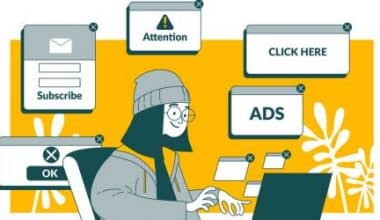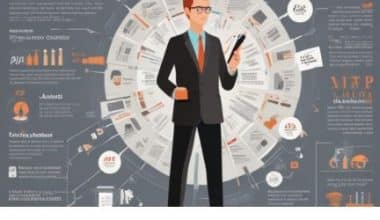In the fast-paced world of digital marketing, staying ahead means embracing automation. SaaS marketing automation changed the way I managed campaigns. I remember juggling spreadsheets, emails, and analytics. It was chaos until I discovered SaaS marketing automation tools. They organize everything, from lead generation to customer engagement. It saved time, reduced errors, and boosted results. SaaS marketing automation transformed my approach and made marketing more efficient.
Curious about how you can harness this for your brand?
I will explore SaaS marketing automation and why it’s essential. We’ll also go into the best tools and strategies for your brand. These tools can revolutionize your marketing efforts. So, keep reading if you want to learn about SaaS marketing automation and take your brand to the next level.
Key Points
- SaaS marketing automation simplifies and optimizes marketing tasks. It saves time, improves efficiency, and enhances the effectiveness of marketing efforts.
- EngageBay is an all-in-one SaaS Marketing Automation tool that combines CRM, marketing automation, and helpdesk solutions.
- SAAS marketing automation enhances the customer experience by delivering personalized and relevant content.
- HubSpot’s marketing automation features include email marketing, lead nurturing, and analytics.
- SAAS marketing automation excels at lead nurturing by automating the process of following up with potential customers.
Understanding SAAS Marketing Automation
SaaS marketing automation uses software-as-a-service (SaaS) platforms to automate marketing tasks. These tasks include email campaigns, social media posting, and lead generation. In SaaS marketing automation, the focus is on using online tools to organize repetitive marketing activities. For example, instead of manually sending out hundreds of emails, SaaS marketing automation can schedule and send them automatically. This saves time and ensures consistency.
When I first started using SaaS marketing automation, I handled all social media posts manually. I had to remember to post at specific times, which was tedious. With SaaS marketing automation, I could schedule posts for the entire week in one sitting. This gave me more time to engage with followers and create better content.
In short, SaaS marketing automation simplifies and optimizes marketing tasks. It saves time, improves efficiency, and enhances the effectiveness of marketing efforts. Using SaaS marketing automation can transform how you handle marketing, making it more strategic and less labor-intensive.
A successful marketing automation strategy involves several key steps. Here’s a comprehensive checklist to ensure you cover all the bases:
SAAS Marketing Automation Tools
I mentioned earlier on how SaaS marketing automation made my work easy by automating tasks like email campaigns, social media posts, lead tracking, and performance analysis, freeing up time and improving efficiency. That was possible with the use of some SaaS marketing automation tools of which I would provide you with 8 of those tools, fully sure that they will help you as much as they did to me.
Here are 8 tools:
1. HubSpot
2. Mailchimp
3. Hootsuite
4. ConvertKit
5. EngageBay
6. ActiveCampaign
7. Semrush
8. Sendinblue
#1. HubSpot

HubSpot is a robust SaaS Marketing Automation tool that offers a complete CRM platform. It helps businesses manage their sales, marketing, and customer service in one place. HubSpot’s marketing automation features include email marketing, lead nurturing, and analytics. It’s known for its user-friendly interface and extensive educational resources.
- Features: HubSpot includes email marketing, lead nurturing, marketing analytics, and social media management. It also offers a free CRM, making it accessible to businesses of all sizes.
- Strengths: HubSpot’s user-friendly interface and extensive educational resources, like HubSpot Academy, make it easy to learn and use. It integrates seamlessly with various other tools and platforms, providing a cohesive marketing strategy.
- Email Marketing: Create, personalize, and send email campaigns.
- Analytics: Detailed reports on campaign performance and customer behavior.
#2. Mailchimp
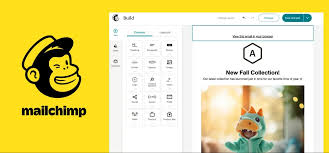
Mailchimp is a popular SaaS Marketing Automation tool primarily known for email marketing. It helps businesses create, send, and analyze email campaigns. Mailchimp also offers features like landing pages, social media ads, and customer segmentation. Its ease of use makes it a favorite for small businesses and startups.
- Features: Mailchimp allows businesses to create, send, and analyze email campaigns. It also offers landing pages, social media ads, customer segmentation, and basic automation workflows.
- Strengths: Mailchimp’s ease of use, drag-and-drop email builder, and variety of templates make it a favorite for small businesses and startups. It also provides detailed analytics to track campaign performance.
- Email Campaigns: Design and send emails with customizable templates.
- Audience Segmentation: Target specific groups of customers for personalized marketing.
- Automation: Set up automated workflows for welcome emails, abandoned cart reminders, and more.
Mailchimp’s ease of use makes it particularly popular with small businesses and startups.
#3. Hootsuite
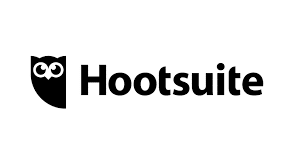
Hootsuite is a SaaS marketing automation tool designed for social media management. It allows businesses to schedule posts, track social media performance, and engage with their audience across multiple platforms. Hootsuite’s dashboard is highly customizable, making it easier to manage different social media accounts in one place.
- Features: Hootsuite enables businesses to schedule posts, track social media performance, and engage with their audience across multiple platforms like Facebook, Twitter, LinkedIn, and Instagram. It offers a customizable dashboard to manage different social media accounts.
- Strengths: Hootsuite’s ability to manage and monitor multiple social media profiles from a single platform is its key strength. It also provides detailed analytics and reporting to measure social media success.
- Scheduling: Plan and schedule social media posts in advance.
- Analytics: Track performance metrics and generate reports.
- Engagement: Monitor social media conversations and interact with your audience.
Hootsuite’s customizable dashboard makes managing multiple social media accounts efficient and straightforward.
#4. ConvertKit
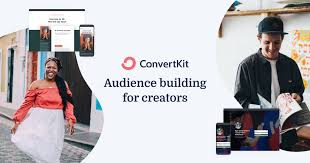
ConvertKit is a SaaS Marketing Automation tool focused on email marketing for content creators. It helps bloggers, podcasters, and YouTubers grow their audience and convert subscribers into customers. ConvertKit offers features like email sequences, automation rules, and landing pages, making it ideal for creators looking to monetize their content.
- Features: ConvertKit offers email sequences, automation rules, landing pages, and subscriber tagging. It helps creators grow their audience and convert subscribers into customers.
- Strengths: ConvertKit’s simplicity and focus on creators set it apart. Its automation capabilities allow for personalized email marketing based on subscriber behavior, enhancing engagement and conversion rates.
- Email Sequences: Automate email series to nurture and engage your audience.
- Automation Rules: Create workflows based on user behavior and interactions.
ConvertKit is ideal for creators who want to monetize their content and build a loyal audience.
#5. EngageBay
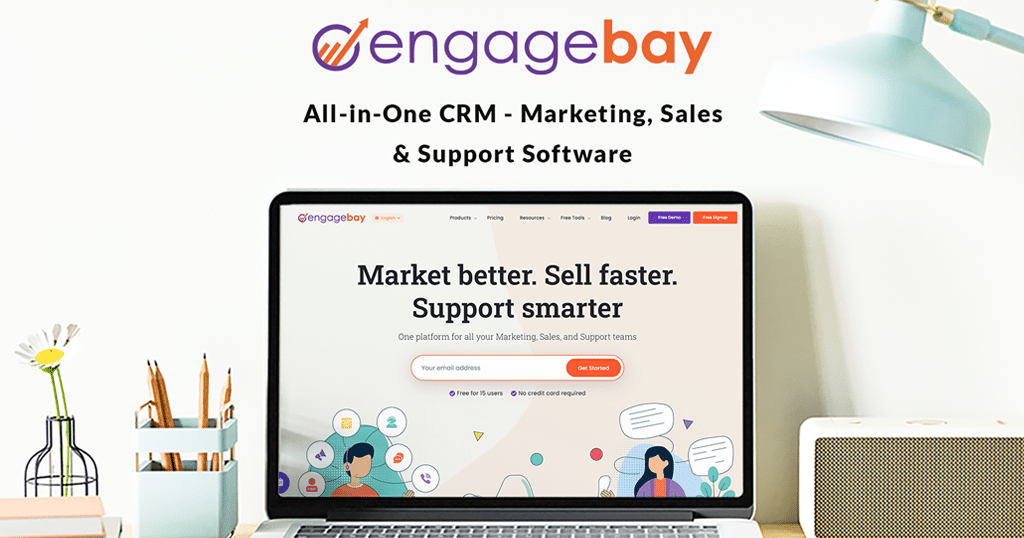
EngageBay is an all-in-one SaaS marketing automation tool that combines CRM, marketing automation, and helpdesk solutions. It helps small and medium-sized businesses streamline their marketing and sales processes. EngageBay offers features like email marketing, lead scoring, and customer segmentation at an affordable price.
- Features: EngageBay includes email marketing, lead scoring, customer segmentation, and marketing analytics. It also offers a free CRM and live chat functionality.
- Strengths: EngageBay’s affordability and comprehensive feature set make it ideal for small and medium-sized businesses. Its integrated approach helps streamline marketing, sales, and customer support processes.
#6. ActiveCampaign
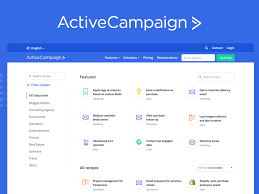
ActiveCampaign is another powerful SaaS marketing automation tool that combines email marketing, automation, and CRM. It helps businesses create personalized customer experiences through advanced segmentation and automation. ActiveCampaign’s features include email templates, marketing automation workflows, and detailed analytics.
- Features: ActiveCampaign offers email templates, advanced automation workflows, segmentation, and detailed analytics. It also supports SMS marketing and site messaging.
- Strengths: ActiveCampaign’s advanced segmentation and automation capabilities enable personalized customer experiences. Its robust analytics provide insights to optimize marketing strategies.
- Marketing Automation: Build complex automation workflows to nurture leads.
- Analytics: Detailed insights into campaign performance and customer behavior.
ActiveCampaign’s advanced segmentation and automation capabilities make it a powerful tool for businesses looking to enhance their marketing strategies.
#7. Semrush

Semrush is a SaaS that marketing automation tool that is primarily used for SEO and online visibility. It helps businesses improve their search engine rankings, analyze competitors, and manage content marketing. Semrush offers features like keyword research, site audits, and backlink analysis, making it a favorite among digital marketers.
- Features: Semrush includes keyword research, site audits, backlink analysis, competitor analysis, and content marketing tools. It helps businesses improve their search engine rankings and online presence.
- Strengths: Semrush’s extensive database and comprehensive SEO tools make it a favorite among digital marketers. Its competitor analysis and keyword tracking features provide valuable insights for improving search visibility.
See also: Proven SaaS Content Marketing Tactics for Boosting Engagement and Conversions
#8. Sendinblue
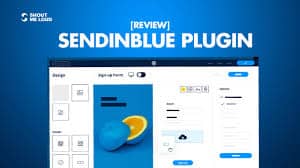
Sendinblue is a versatile SaaS Marketing Automation tool that offers email marketing, SMS marketing, and chat. It helps businesses create and automate campaigns across multiple channels. Sendinblue’s features include email templates, marketing automation workflows, and detailed reporting, making it suitable for businesses of all sizes.
- Features: Sendinblue provides email templates, marketing automation workflows, SMS campaigns, and detailed reporting. It also includes a CRM and chat functionality.
- Strengths: Sendinblue’s multi-channel approach and affordability make it suitable for businesses of all sizes. Its user-friendly interface and automation capabilities enhance marketing efficiency.
Below is an infographic on the benefits of SAAS marketing automation. I created it so it can help you to visually highlight its advantages.
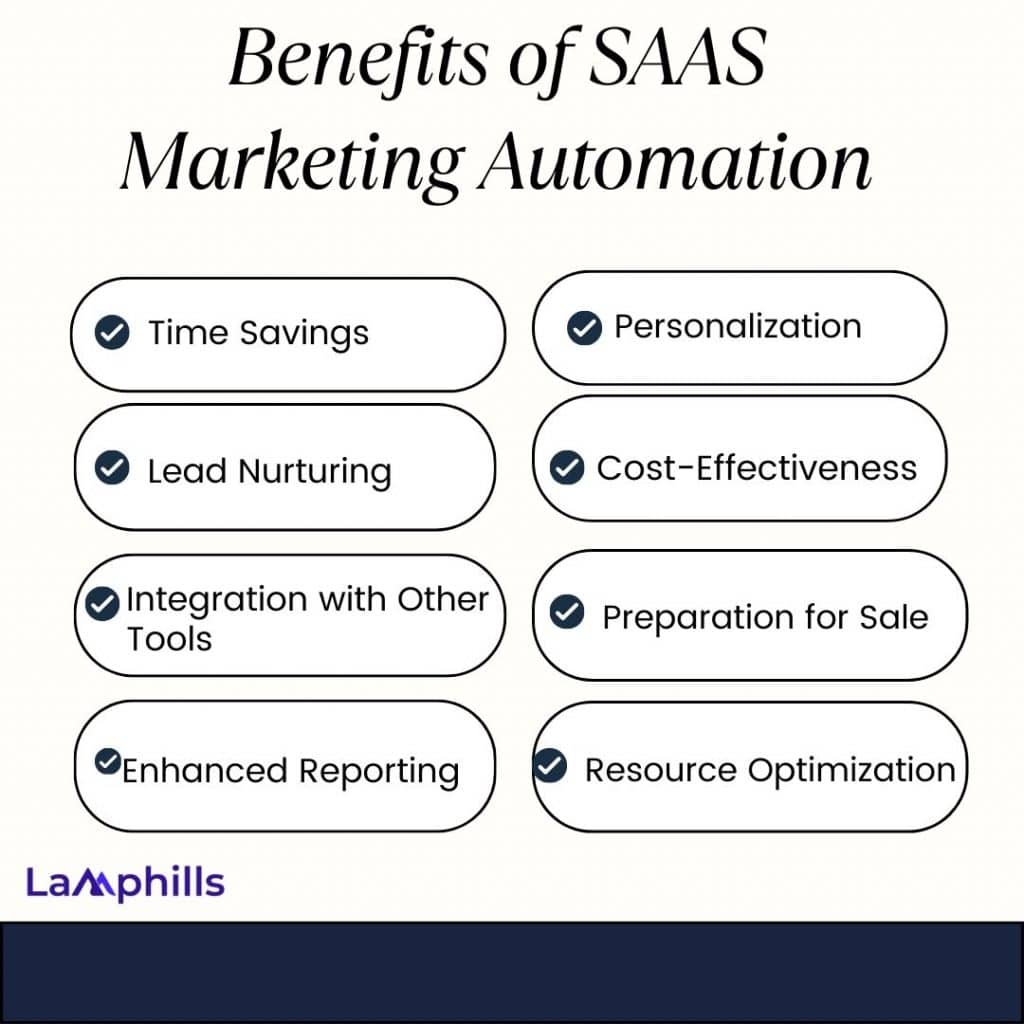
Benefits of SAAS Marketing Automation
This technology not only saves time and resources but also enhances personalization, improves customer experiences, and provides valuable data-driven insights. Let’s explore the benefits of SAAS marketing automation and understand how it can revolutionize marketing strategies.
#1. Time Savings
SAAS marketing automation saves time by automating repetitive tasks such as sending emails, scheduling social media posts, and managing ad campaigns. Instead of handling these tasks manually, marketers can set up automated workflows that run on their own. This allows the marketing team to focus on strategic planning and creative efforts, ultimately improving productivity.
#2. Personalization
With SAAS marketing automation, businesses can deliver personalized marketing messages at scale. The software can segment audiences based on various criteria such as behavior, demographics, and purchase history. This enables the creation of tailored content that resonates with each customer segment, increasing engagement and conversion rates. Personalized marketing leads to a more meaningful connection with customers, fostering loyalty and long-term relationships.
#3. Lead Nurturing
SAAS marketing automation excels at lead nurturing by automating the process of following up with potential customers. Through automated email sequences, targeted content, and personalized messages, businesses can keep leads engaged and guide them through the sales funnel. This consistent and timely communication helps build trust and increases the likelihood of converting leads into paying customers.
#4. Cost-Effectiveness
SAAS marketing automation is cost-effective because it reduces the need for a large marketing team and minimizes manual errors. By automating tasks, businesses can achieve more with fewer resources. The software also allows for better allocation of the marketing budget, ensuring that funds are spent on strategies that yield the best results. Overall, this leads to a higher return on investment (ROI) and more efficient use of marketing dollars.
#5. Integration with Other Tools
SAAS marketing automation often integrates seamlessly with other marketing and sales tools, such as CRM systems, social media platforms, and analytics tools. This integration provides a holistic view of customer interactions and behaviors, enabling more informed decision-making. Marketers can track customer journeys across different channels and ensure a cohesive strategy, improving overall campaign effectiveness.
#6. Enhanced Reporting
SAAS marketing automation offers advanced reporting capabilities that provide insights into various aspects of marketing campaigns. Marketers can generate detailed reports on metrics like open rates, click-through rates, conversion rates, and customer journeys. These insights help evaluate campaign performance, identify trends, and make data-driven decisions to optimize future campaigns.
#7. Resource Optimization
By automating repetitive and time-consuming tasks, SAAS marketing automation allows marketing teams to focus on strategic planning, creative development, and other high-value activities. This optimizes the use of time and talent within the marketing team, leading to more effective and efficient marketing efforts. With automation handling the tasks, marketers can dedicate their efforts to areas that require human insight and creativity.
#8. Improved Customer Experience
SAAS marketing automation enhances the customer experience by delivering personalized and relevant content. Automated systems ensure that customers receive timely responses to their inquiries, personalized recommendations based on their behavior, and consistent communication. This level of attention and care improves customer satisfaction and loyalty, making customers feel valued and understood.
What Does SAAS Stand For?
SAAS stands for “Software as a Service.” This model delivers software applications over the internet, allowing users to access and use them via a web browser without needing to install or maintain the software on their local devices. Common examples include Google Workspace, Salesforce, and Microsoft 365.
How Do SAAS Companies Market Themselves?
SaaS companies often use several effective strategies to market themselves:
- Content Marketing: They create valuable content like blogs, whitepapers, and videos that address pain points and provide solutions, establishing authority in their niche.
- SEO Optimization: They focus on ranking high in search engines for relevant keywords, driving organic traffic to their websites through targeted content and optimization.
- Social Media Marketing: Leveraging platforms like LinkedIn, Twitter, and Facebook to engage with their audience, share updates, and build a community around their brand.
- Paid Advertising: Using PPC (Pay-Per-Click) campaigns on Google Ads, social media ads, and other platforms to target specific audiences and drive traffic to their websites.
- Email Marketing: Sending personalized, relevant emails to leads and customers to nurture relationships, announce new features, or share valuable content.
- Referral Programs: Encouraging existing customers to refer others through incentives like discounts or rewards, leveraging word-of-mouth marketing.
- Partnerships and Integrations: Collaborating with other companies or integrating their SaaS product with complementary tools to expand their reach and provide added value to customers.
- Free Trials and Freemium Models: Offering free trials or limited-feature versions of their software to allow potential customers to experience the product before making a purchase decision.
- Customer Success Stories: Showcasing case studies and testimonials from satisfied customers to build trust and credibility in their solution.
- Events and Webinars: Hosting or participating in industry events, webinars, and conferences to network, educate potential customers, and showcase thought leadership.
Related Articles
- Conversion Marketing: Strategies to Boost Your Business Growth
- Content Marketing for Startups: Growth Hacking Secrets for Explosive Traffic
- 10 Top In-Demand Digital Marketing Skills You Should Know in 2024: Expert Insights




